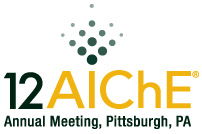

CO2 - Ionic Liquids synergies: Reactive capture and conversion of CO2 to chemicals
Valerie Etaa, Pasi Virtanena, Ikenna Anugwoma, Päivi Mäki-Arvelaa, Jyri-Pekka Mikkolaa,b
aLaboratory of Industrial Chemistry and Reaction Engineering, Process Chemistry Centre, Åbo Akademi University, Biskopsgatan 8, 20500 Turku/Åbo, Finland.
bTechnical Chemistry, Department of Chemistry, Chemical ? Biological Center, Umeå University, SE-90187 Umeå.
Novel technologies based on the utilization of abundant and non-toxic carbon dioxide (CO2) for the synthesis of materials and chemicals may significantly contribute towards the development of sustainable industrial practices. Naturally, myriad substances are synthesized from CO2 and consumed by humans. The conversion of CO2 to fuels and chemicals is an attractive method of utilizing CO2 from the viewpoint of green chemistry and sustainable development. The use of CO2 in the synthesis of chemicals such as dimethyl carbonate (DMC) or switchable ionic liquids (SILs) constitutes an environmentally attractive alternative to hazardous and toxic reagent, and resulting in waste minimisation. DMC exhibits versatile physical and chemical properties, such as low toxicity and excellent biodegradability and thus, is an environmentally benign building block for other chemicals.
In the present study, i) DMC was synthesised from CO2 and methanol, and ii) CO2 was used as feedstock for the synthesis of switchable ionic liquids (SILs) where the entire ?COO? moiety is maintained.
The direct synthesis of DMC from methanol and CO2 is characterized by low yields due to the reaction equilibrium and the thermodynamic limitations ( ![]() = +26.3 kJ/mol). Alkoxide ionic liquids possessing alkylimidazolium and benzalalkonium cations were prepared, characterised and tested together with ZrO2-MgO catalyst for the synthesis of DMC from methanol and CO2. By using the novel ionic liquid as additives, ca 12 % conversion of methanol, and 90 % selectivity to DMC was obtained at 120 °C and 7.5 MPa [1]. The water abstracting potential of the ionic liquids influenced the conversion of methanol and the selectivity to DMC. The alkoxide ionic liquids were recovered and reused in DMC synthesis without loss in activity and selectivity.
= +26.3 kJ/mol). Alkoxide ionic liquids possessing alkylimidazolium and benzalalkonium cations were prepared, characterised and tested together with ZrO2-MgO catalyst for the synthesis of DMC from methanol and CO2. By using the novel ionic liquid as additives, ca 12 % conversion of methanol, and 90 % selectivity to DMC was obtained at 120 °C and 7.5 MPa [1]. The water abstracting potential of the ionic liquids influenced the conversion of methanol and the selectivity to DMC. The alkoxide ionic liquids were recovered and reused in DMC synthesis without loss in activity and selectivity.
Switchable ionic liquids are compounds which can be switched from molecular compounds to ionic liquid by bubbling acid gas, such as CO2, through the liquid. The formed ionic liquid can be switched back to molecular building blocks - and CO2 will be released - by bubbling an inert gas, such as N2, through the liquid or applying vacuum. Novel SILs containing 1,8-diazabicyclo-[5.4.0]-undec-7-ene (DBU), glycerol and CO2 were synthesized, characterized and tested for the selective fractionation of lignocellulosic materials. The structures of the synthesized SILs were confirmed by NMR and FTIR. The results showed that carbonate containing ionic liquid was thermally stable up to 120 °C and was capable of selectively fractionate birch chips at 100 °C in a batch reactor (Fig. 1). FTIR spectra indicated that DBU was protonated via formation of N?H and C=NH+ bands. Furthermore, deprotonation of glycerol was confirmed by FTIR. NMR spectra of the SIL showed the formation of glyceryl carbonate [2]. As such, the challenges associated with the use of ionic liquid, such as the high costs and the risk assessment of the complete life cycle of ionic liquids could be minimized by using cheap and less toxic SILs.
Figure 1. Photograph of untreated (left) and SIL treated birch chip. Treatment conditions: T = 100 oC, t = 120 h.
References
[1] Eta V., Mäki-Arvela P., Salminen E., Salmi T., Murzin D., Mikkola J-P.; Catal Lett (2011) 141:1254?1261
[2] Anugwom I., Mäki-Arvela P., Virtanen P., Willför S., Damlin P., Hedenström M., Mikkola J-P.; Affiliation Information
1. Laboratory of Analytical Chemistry,Åbo Akademi University,Process Chemistry Centre, Åbo-Turku, Finland
[3] Holzforschung, (2012) in press, DOI: 10.1515/hf-2011-0226

